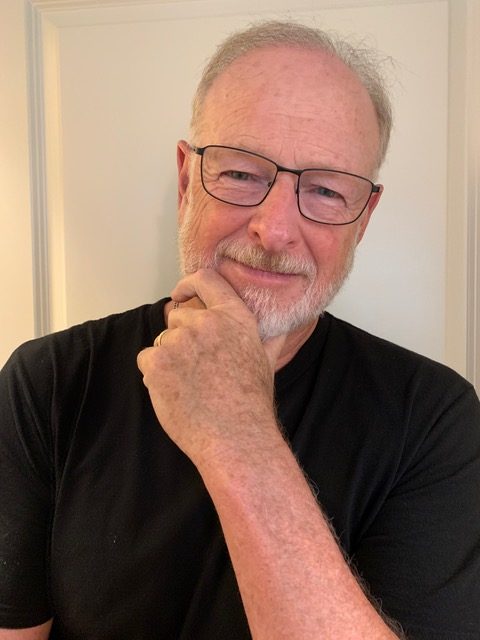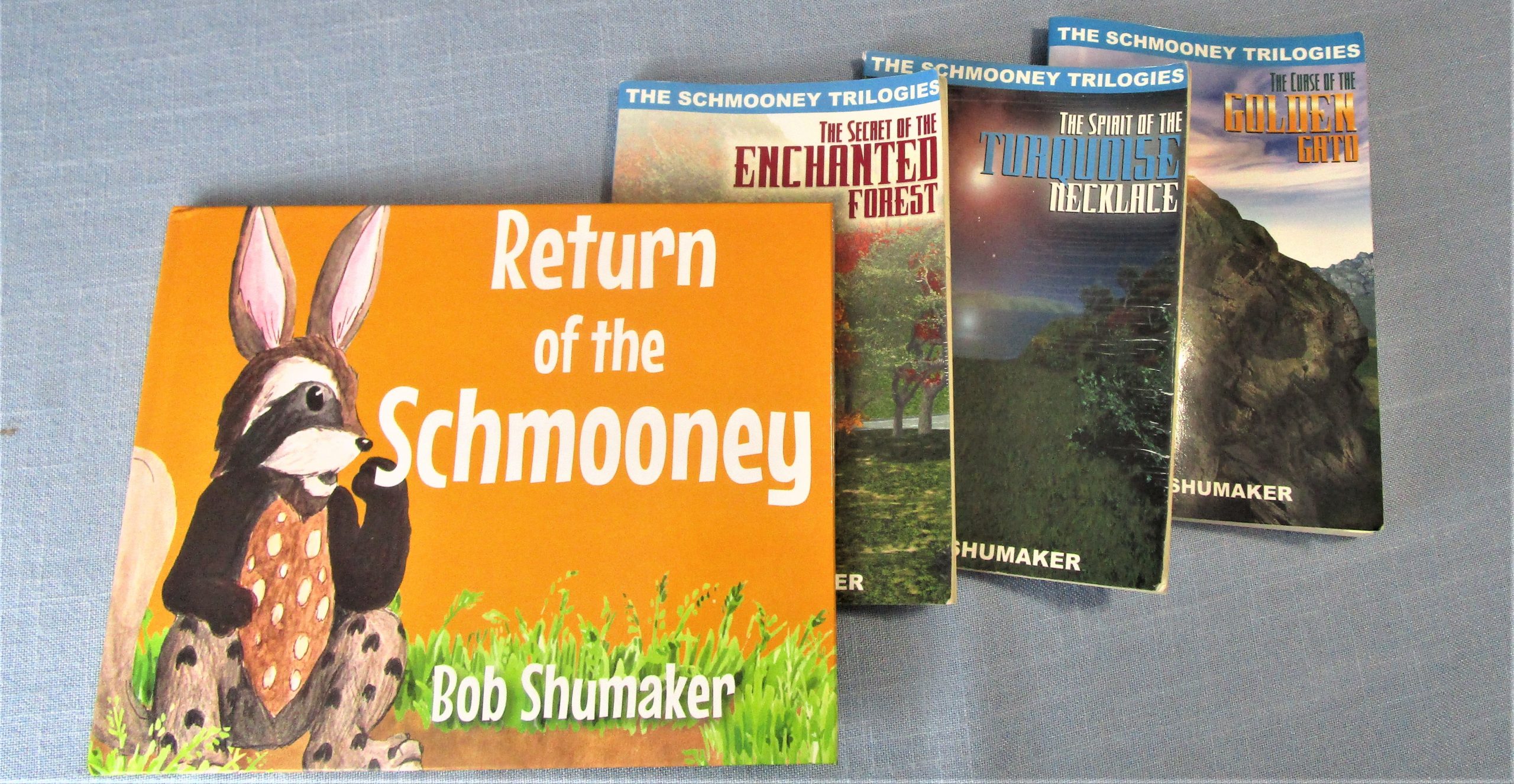
This week, we’re excited to be talking with children’s author Bob Shumaker. After retiring from his sales and marketing company, Bob chose to focus on his lifelong passion of writing. His character the Schmooney was the South Carolina Mascot for Literacy for several years, and also the Simpsonville City Mascot. Now, he’s excited to be sharing the legacy of the Schmooney with his grandson Cole, who will be a co-author for the next illustrated book, The Schmooney and the Deadly Swarm.
Today, we’ll be delving into Bob’s thoughts on reading and writing, as well as discussing his latest book, The Return of the Schmooney. Thanks for joining us, Bob. Let’s jump in.
LitWyrm: First question; what do you think makes a good story?
Bob: Ok, great place to start. I would say the elements of a good story are, first and foremost, to capture your reader’s attention early. Then maintain that interest by offering intrigue, a narrative that flows smoothly, and lively dialogue through relatable characters. Paint beautiful scenes with your words, provide a great plot with a few subplots to give depth, and deliver a few twists along the way with a surprise ending. That’s all you have to do. Simple, right? No, not really. Most stories have only some of those elements, and they are still fun to read. So, if you’re aiming to write a good story, try to deliver as many of those elements as possible.
When I write children’s books, I like to provide learning points through a heroic protagonist who guides the reader using his moral compass, but in a subtle way – kids get turned off if we try to shove the lesson down their throats. The good guy(s) always win and during their adventure they teach us how we, too, can become winners. Writing is a perfect opportunity to teach and to learn.
There are so many different ways to learn – reading is one of them, and it’s one of the most enjoyable and effective ways to learn and the least painful.
LitWyrm: So speaking of heroic protagonists, can you tell us a little about your new book?
Bob: I’d love to! The Schmooney is a forest animal who feels he’s unworthy of friendship and love. One day he meets a mouse who teaches him that we each have a gift – we only have to look inside ourselves to find it. When danger suddenly threatens the animals of the forest, the Schmooney bravely risks his own life to alert the forest animals of the threat. The Schmooney discovers that he has a gift, and he uses his gift to help his friends.
This is a book about friendship, diversity, and the importance of working together. As one reviewer said, it’s important for all of us, children especially, to realize that our differences make our communities stronger. When we bring our individual gifts together, we can conquer many problems that might otherwise go unsolved. The Schmooney reminds each reader that they have an important gift, a gift that will help define them.
LitWyrm: I know for a lot of us, finding our strengths can be a long process. While we’re talking about gifts, can you tell us about some of the mentors or experiences in your own life that helped you recognize your gifts? Did they help inspire the creation of the Schmooney?
Bob: Great questions. As a child, I wanted to know why other children could do things that I couldn’t do. My father left at an early age, my mother worked full-time and painstakingly and successfully raised me and my sister. Other family didn’t live near us and my sister was 4 years older than me, so I was alone most of the time. It was a lonely childhood. I developed slowly. Basically, I was the Schmooney.
I didn’t read and avoided books. My mother found an older lady in our neighborhood who helped me read (I say older, but she was probably 30 years younger than I am today). I would stop by after school, and she would have me read out loud for hours. What a grind that was! Several hours of reading until my mother got home from work. She doubled as a babysitter and a tutor. Ingenious.
LitWyrm: Sounds like the perfect set-up, at least from a parent’s perspective. How did you like it?
Bob: At first I hated it, but then I started to enjoy it. I began to act out the characters. I was in another world, and it was fun being there. It was an escape from the real world and that’s what I was looking for. Slowly, I realized I had a ‘gift’ for reading and acting. This was transformational for me.
Soon I realized there were other things that I could do well, too. I was good at math. I could run faster than most of my classmates. I was very creative, which got me into trouble…often. I had a sense of humor and could make people laugh. I made friends easily – people started to like me. For awhile, I thought everyone could do those things, but I was wrong. I was slowly coming out of my guarded shell, thanks to this wonderful lady’s persistence and my mother’s direction. Also, two of my buddies’ dads treated me like their own son and gave me valuable learning experiences.
My 10th-grade English teacher helped me discover writing and the ability to express myself through words. That was huge! I started writing, and it became fun. I discovered that whenever I set my mind to do something, when I challenged myself, I could do it – and often do it well.
Today, when I see children going through what I went through, I want to help them discover the things that took me so many years to learn. The Schmooney and I are doing that through writing.
LitWyrm: You and the Schmooney seem to have a lot in common. Which leads me to my next question. At the end of the story, the Schmooney gains attributes from seven other animals. If you could be any of those animals, which would you be and why?
Bob: Bobcat, of course, just because of the name.
Seriously, I have been each of those animals at least once in my life. Perhaps we all have? I have been strong as the bear. I’ve been inquisitive and conniving as the raccoon. I’ve been malodorous like the skunk, and as fast and graceful as the deer. The key is to be all of those animals and have all those attributes, as much of the time as possible.
Litwyrm: Switching gears a little, I’d like to ask about some of your community that’s been involved in the process of the Schmooney.
Firstly, you’ve had the opportunity to work with several talented illustrators in bringing your characters to life. What’s been the most rewarding/surprising part of working with these artists?
Bob: Yes, I have worked with several incredibly talented illustrators. What a gift it is to be able to create artwork. To draw or paint something that has never been seen before. Illustrators do that and I am always amazed and envious of their talents and gifts. It’s their creativity that amazes me, which is always rewarding. But then I witness their humble approach to what they do and that surprises me the most.
Litwyrm: Secondly, you also mentioned that your grandson Cole will be collaborating with you on future projects. Can you tell us a little about that? What are you looking forward to most in that process?
Bob: My grandson, like most 7-year-old boys, has interests outside of reading and writing. I want to provide him with a vehicle that will encourage him to embrace the fascinating world of literature. He likes reading stories, and he likes to have stories read to him. I would like him to take the lead and read, and write, early in his life so that he can broaden his interests. Actually, that could be our new motto, “Take the lead and read!” Hmm, that’s a catchy phrase, isn’t it?
LitWyrm: It is pretty catchy. And I agree, there’s a lot to be learned from the process of writing, as well as reading.
So, what’s one lesson you learned through writing the Schmooney stories? (From either the picture books, trilogy, or both)
Bob: I learned that if you want something bad enough, you will find a way to get it. Have that confidence. I never thought the ‘Trilogies’ would happen. I never thought of myself as a writer. An author? No, not me. But I stuck with it. Publishing books that people enjoy enough to purchase and to encourage their friends to read them, wow! People telling me how my stories have positively affected their lives. Never thought that would happen to me. Persistence is what I learned; we will find a way to do it.
LitWyrm: In closing, what is one piece of advice you would give aspiring writers/and or artists?
Bob: I will give you two. The first is to read. We learn through reading. Writers learn to find their own style by reading other writers’ works. Read as much as you can. The second piece of advice is to be persistent. Rejection is everywhere. You can’t avoid it. So, prepare for it and deal with it. Try not to let rejection dampen your initiative. Be persistent.

Leave a Reply
You must be logged in to post a comment.